Discovering a lighthouse typically doesn’t conjure thoughts of encounters with extraterrestrial beings. However, in York, Maine, there’s a charming lighthouse perched on a small island that might just become one of the initial glimpses of Earth for visitors from outer space.
It’s a quirky connection, and in this piece, we’ll dive into this cosmic connection while giving you some pointers for your visit to this iconic beacon known as the Nubble Lighthouse or just simply “Nubble Light.”
Table of Contents
What is Nubble Light?
Nubble Light (aka Cape Neddick Light Station) is one of the most iconic lighthouses in Maine and indeed the entire world. It’s known for its picturesque beauty situated atop a small rocky island just off the coast of Sohier Park but its also known for being one of the images included on the Voyager Golden Record (much more on that below).
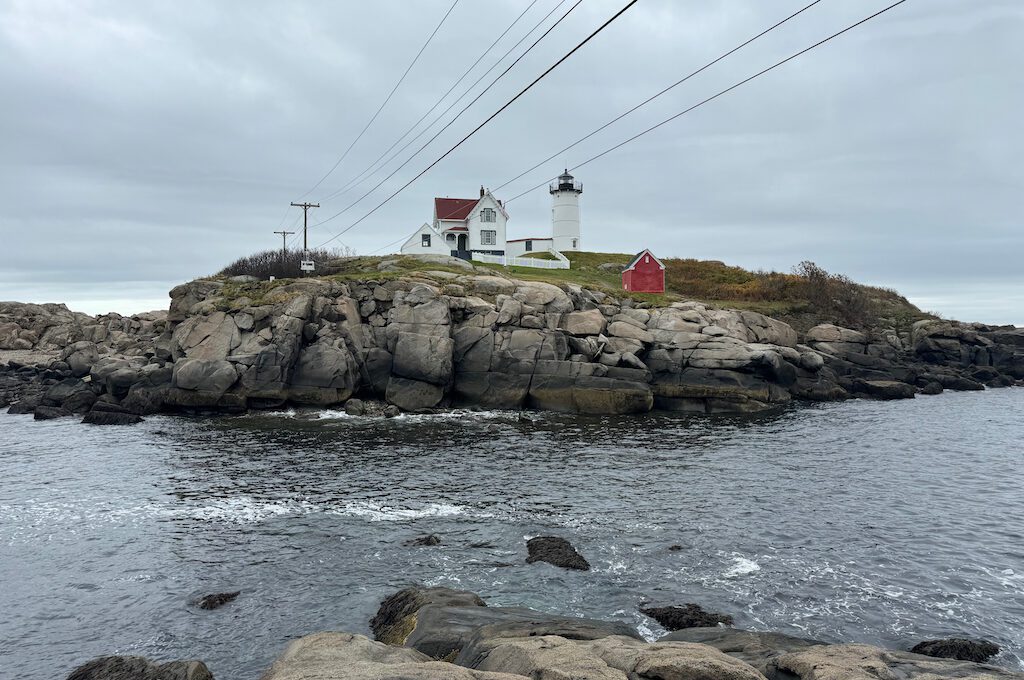
A brief history of Nubble Light
The Nubble’s coastline had a grim history of shipwrecks long before the Nubble Light came to the rescue.
The most infamous of these maritime tragedies was the wreck of the Isidore in 1842, where every soul on board met a tragic end. Since that fateful day, a haunting legend has persisted—a tale of a phantom ship that still roams these treacherous waters.
Fast forward to 1874, and a presidential nod from Rutherford B. Hayes saw $15,000 earmarked for the construction of a lighthouse on this rocky “Nub” of land (which is where its name came from).
With funds secured, the construction gears cranked into action in 1879. The Cape Neddick Light Station emerged from the toil, and by the end of that very same year, it was up and running, providing a guiding light to sailors navigating these perilous waters.
It stands 41 feet tall but the light is 88 feet above sea level because of the additional height from its high perch point.
The Nubble Island played host to over 30 lighthouse keepers during the span from 1879 to 1987. But in the summer of ’87, it marked a historic farewell as it embraced automation, becoming the very last lighthouse in North America to bid adieu to its devoted keeper.
Cape Neddick Light, standing tall on its rocky pedestal, boasts a unique claim to fame. It’s among the dwindling number of lighthouses in Maine—only eight of them—that can still flaunt their original Fresnel lens, a piece of maritime history that’s becoming rarer by the day.
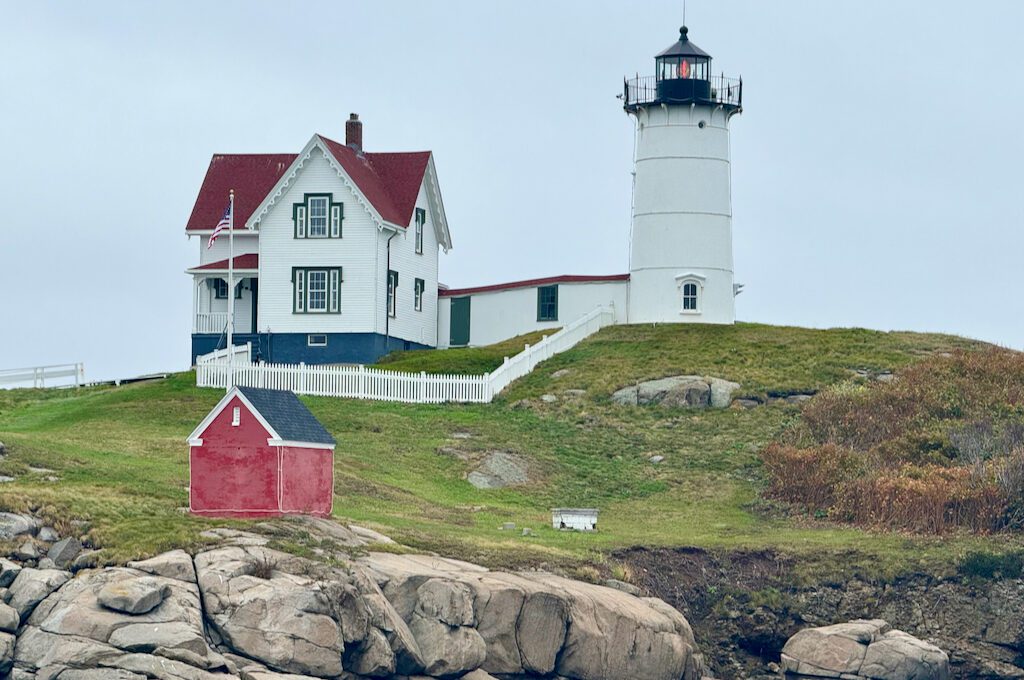
Adding to its charm and rich history, the Nubble Lighthouse has earned a notable spot on the Voyager Golden Record, which was a spacey time capsule.
The brainchild of a committee chaired by Carl Sagan of Cornell University and NASA back in 1977, it aimed to present an interstellar mixtape that captured Earth’s essence in both sights and sounds.
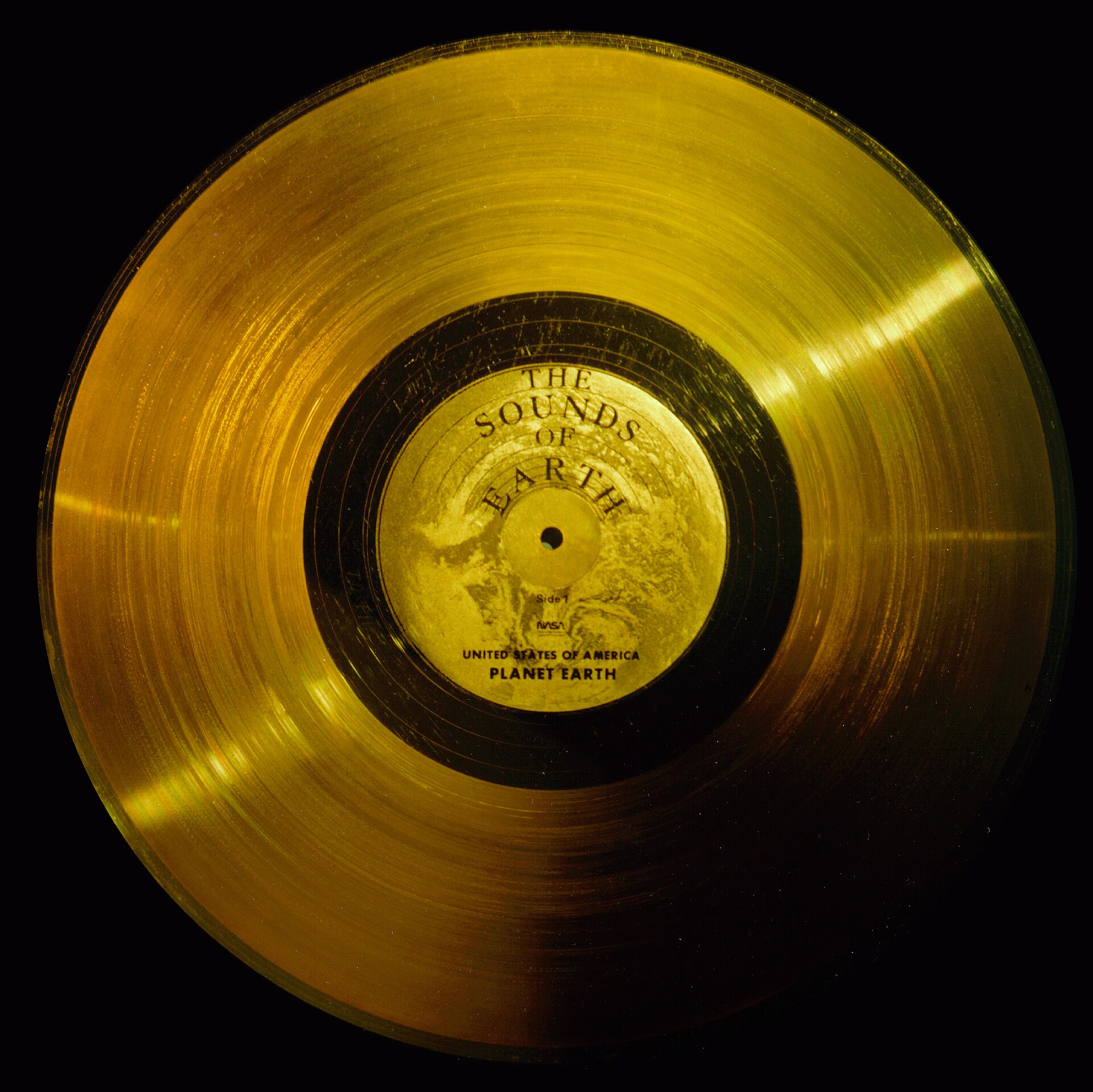
Two 12-inch gold-plated copper phonograph records were made and placed on the outside of Voyager 1 and Voyager 2, which were two spacecraft launched in 1977 with the mission of exploring Jupiter and Saturn along with the outer planets of our solar system.
The audio portion of this record is quite the extraterrestrial playlist. It consists of “earth sounds” like crashing waves, howling winds, the rumble of thunder, bird songs, and even the haunting calls of whales—all representing Earth’s sonic symphony.
The record also grooves through the centuries and cultures with a lineup of musical marvels. Beethoven, Bach, Mozart are all there, along with a world tour of sounds, from the Navajo harmonies to the ancient echoes of Aboriginal songs from Australia. Give it a listen here.
The Voyager Golden Record also carries spoken greetings, welcoming any cosmic neighbors in fifty-five different languages.
But it’s the images on the record that have the connection to the Nubble Lighthouse.
The 115 images on the record have everything from the Great Wall of China to images of people eating and drinking (in totally not normal ways). But one of the images used was of our dear friend, Nubble. If you scroll down on this article I believe you will see the actual photo used. It’s called “Seashore” by Dick Smith.
All of this means there’s always the chance that if intelligent extraterrestrial beings do come into contact with the record, this lighthouse might be one of the first images of earth they encounter! Yes, it’s a stretch but still, pretty cool stuff.
By 1990, both Voyager spacecraft were beyond the orbit of Pluto and now they are somewhere in interstellar space, still sending scientific information about their surroundings through the Deep Space Network. But before they get anywhere remotely close to another planetary system it will be around 40,000 years!
Where is the Nubble Lighthouse?
The Nubble Lighthouse is located in York, Maine, about 50 minutes south of Portland, Maine. It is free to visit and you can find free parking on the mainland which looks directly at the site of the lighthouse.
The address to the parking lot is: Sohier Park Rd, York, ME 03909
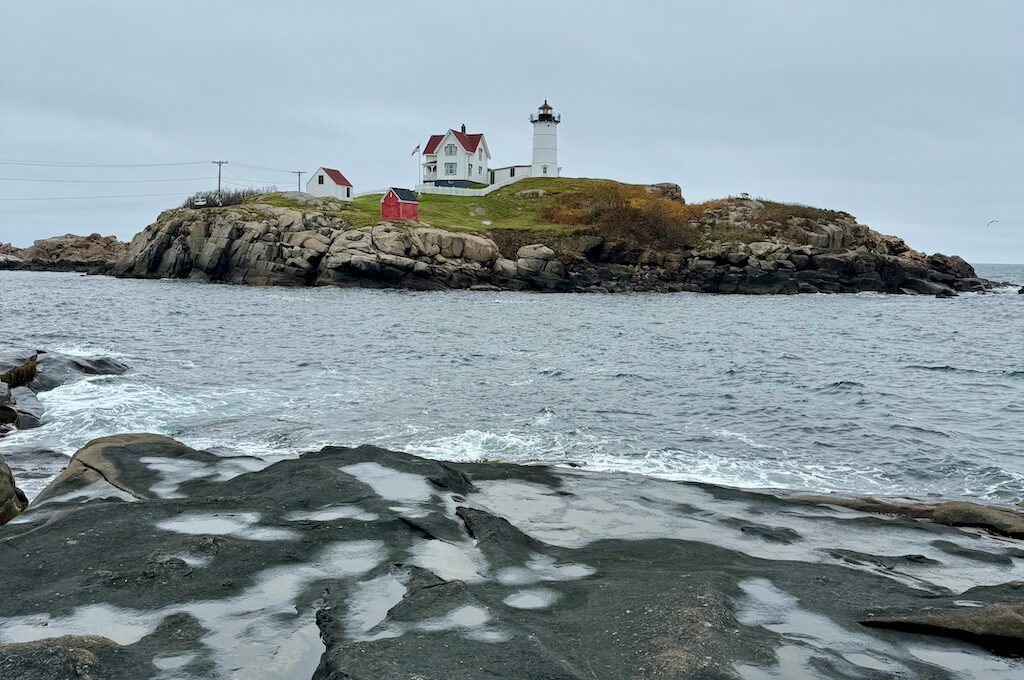
Experiencing the Nubble Lighthouse
We arrived at Nubble around noon on a cloudy and cool Friday.
The sea breeze was quite strong, and we weren’t the only ones with this idea. Many others were also visiting, and the parking lot was quite busy, although it is a good sized lot.
To have a more peaceful experience, you might want to consider visiting early in the morning or later in the afternoon or evening, as this lighthouse sees an estimated 500,000 visitors annually.
The actual grounds of the lighthouse are inaccessible to the public most of the time as there’s no bridge that connects it to the mainland. Instead, it looks like they get supplies across by boats or perhaps a cart that runs a long a cable.
While I’ve heard some chatter about folks trying to venture to the island during low tide, I strongly advise against attempting it unless you’re well-versed in the ways of tides and navigation.
There have been quite a few unsettling stories of people underestimating the tides’ unpredictability, and you definitely don’t want to find yourself stranded without a way back or, even worse, caught in a precarious tidal situation.
Besides, even if you were to manage to reach the island, it’s my understanding that it’s generally off-limits to the public. So, in the interest of safety and following the rules, it’s probably best to enjoy the view from the mainland.
Most visitors opt for a leisurely exploration of the lighthouse surroundings by strolling along the coastline. You’ll find some sizeable rocky slabs that offer fantastic vantage points for taking in the views and snapping some memorable photos.
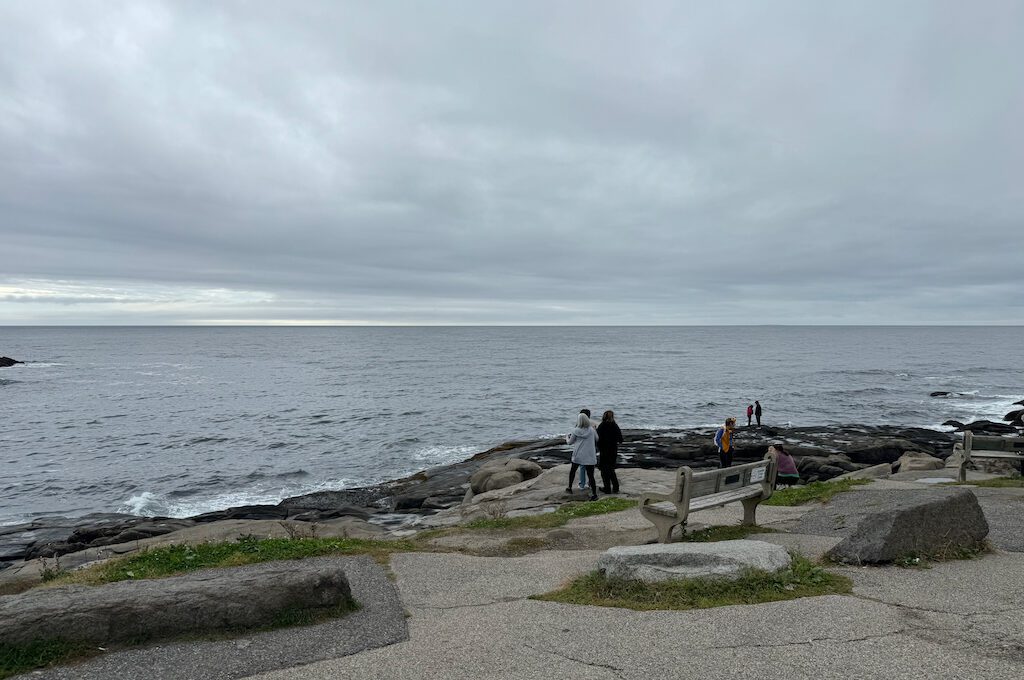
Do keep in mind, though, that this area can get quite windy. I initially had thoughts of capturing some drone shots, but the combination of the bustling crowds, gusty winds, and potential powerline hazards made me rethink that plan.
Once we’d had our fill of lighthouse gazing, it was time to satisfy our appetites. Thankfully, the area offers a variety of dining options, including a selection of places renowned for their lobster dishes. However, we opted for Wild Willie’s, a western-themed eatery known for its burgers, homemade root beer, and other tasty specials.
We were more than pleased with our burger experience, and the service was top-notch. If you’re in the area, I wholeheartedly recommend giving it a try.
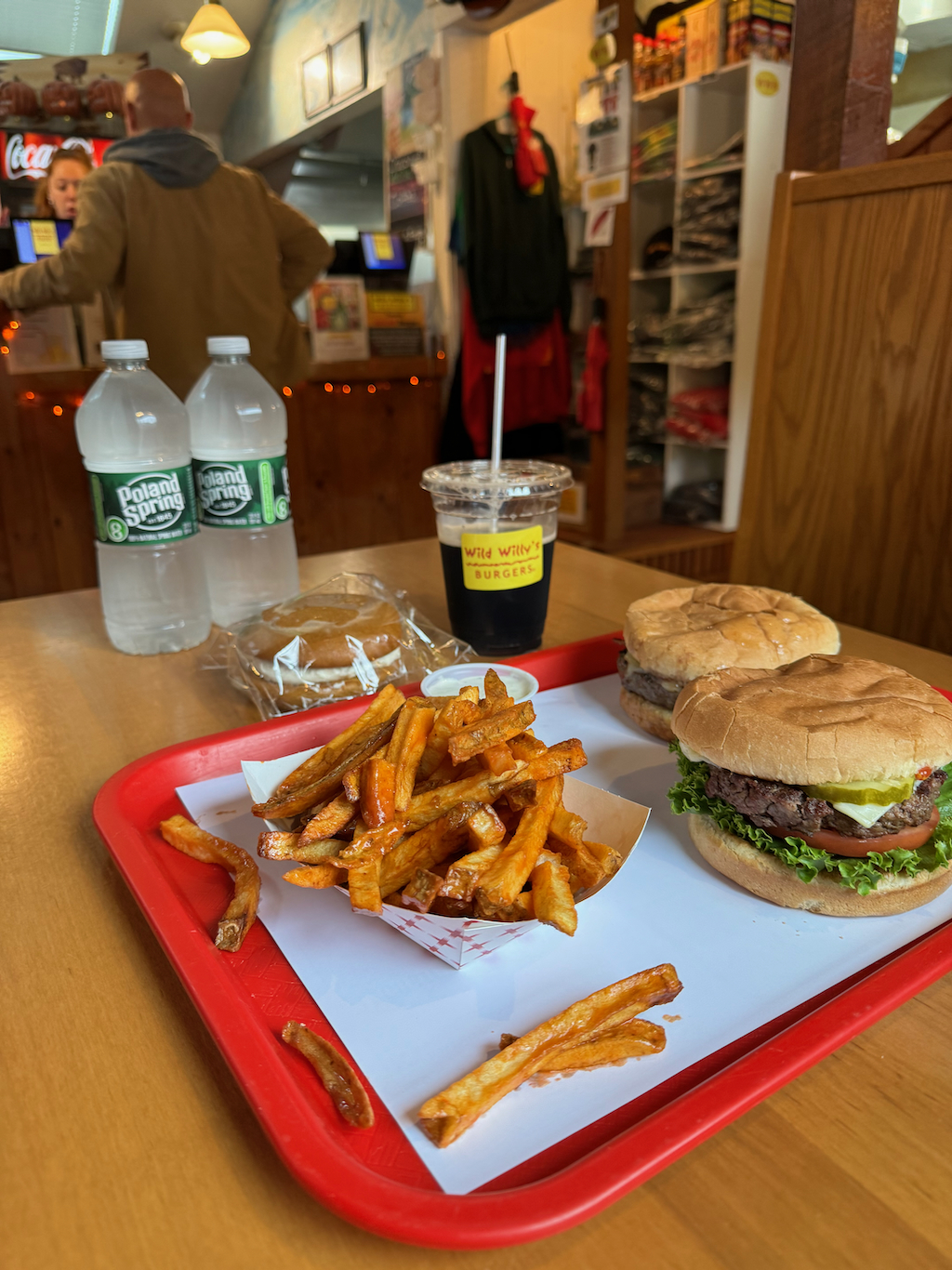
Final word
After exploring lighthouses in Michigan, we’ve seen a lot of lighthouses this year — more than I had seen in a lifetime. But Nubble is one of the must-sees in my opinion. It’s picturesque and uniquely situated on its own little fortress of an island. And the fact that its likeness is floating around in the middle of interstellar space with the hopes of making contact with aliens one day is something that’s unique.
Daniel Gillaspia is the Founder of UponArriving.com and the credit card app, WalletFlo. He is a former attorney turned travel expert covering destinations along with TSA, airline, and hotel policies. Since 2014, his content has been featured in publications such as National Geographic, Smithsonian Magazine, and CNBC. Read my bio.

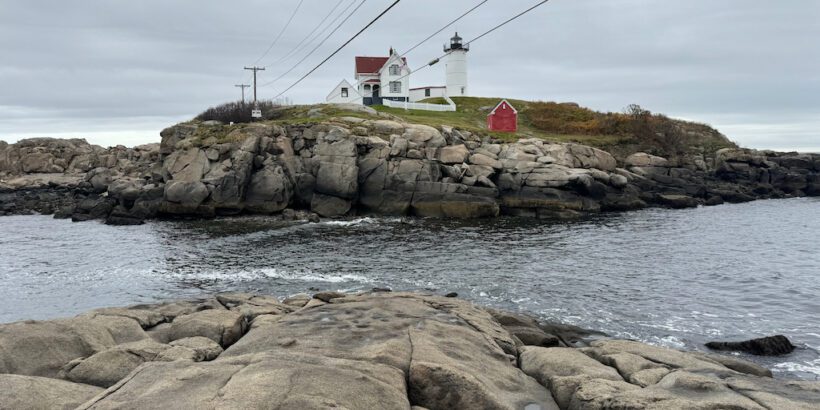
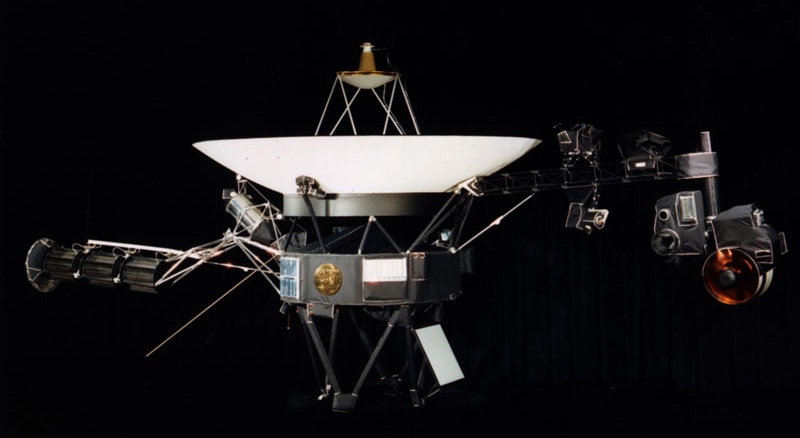
In 1977 I was the Design Director on the Voyager Golden Record and selected this photo for inclusion because I thought it portrayed a coastal scene perfectly. I am glad to know more of its history.
Wow. It really is an iconic shot in so many ways. I’m truly fascinated by the Voyager project and might have to come back to this topic soon. Also, would love to hear from you re: some questions about your work over the years. You’ve had some extremely interesting projects to say the least!
Happy to talk anytime.